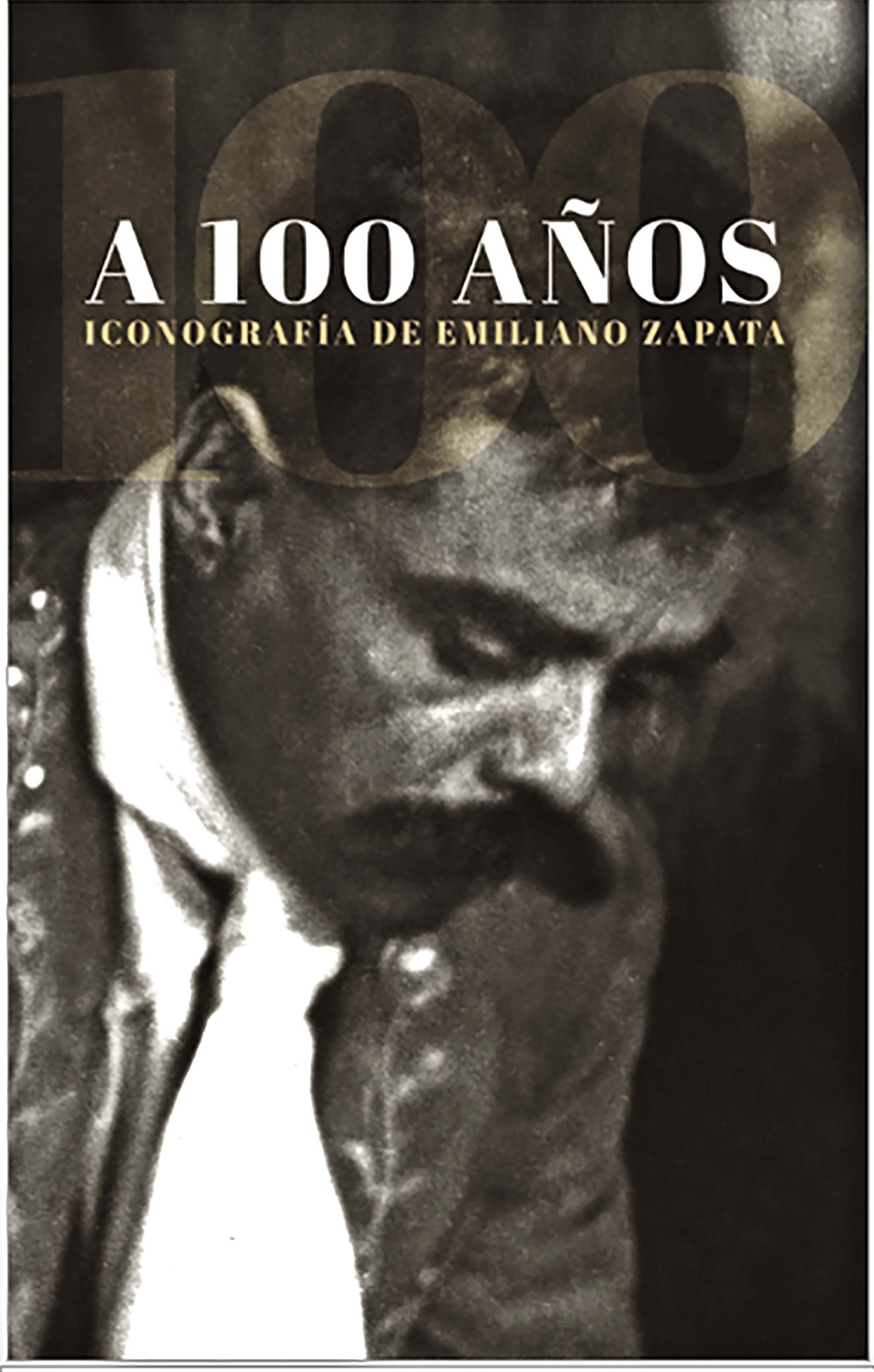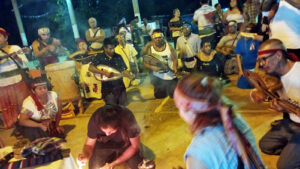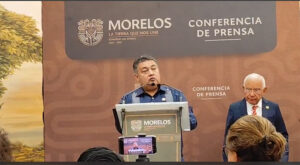Emiliano Zapata´s iconographic book is prepared to celebrate 141 years of his birth
- by Redacción

Máximo Cerdio
translation Yesenia Daniel
Cuernavaca, Morelos, México; August 5th of 2020. Edgar Castro Zapata a great grandson of the hero of the agrarianism in Mexico Emiliano Zapata, recently announced the edition of a book for celebrating his 141 birth anniversary. The general Emiliano Zapata Salazar was a farm leader and started one of the most important social movement in Mexico: the Mexican Revolution in 1910 that gave ownership of the land fields to the farmers, the rightful owners.
Edgar Castro lives in Cuautla Morelos, (near to Anenecuilco born place of Zapata in 1879) he is president of “Zapata´s Foundation and the Heirs´ Revolution”, He said that the book is titled “At 100 years. Iconography of Emiliano Zapata”, it will be presented on August 7 online edition.
Edgar Castro is an historian and director of the Institute Pro-Veterans of the South Revolution, in a interview disclosed the existence of the unpublished documents and photographs that clear up passages of Zapata´s life and others that refute the official history.
In accordance with Castro, the book´s main focus, coordinated by him and PhD. Felipe Ávila, president of National Institute of Historic Studies and the Revolutions in Mexico (INEHRM by its initials in Spanish), is “give a national and international view of Zapata´s legacy”.
“We invited to symbolic historians like John Womack, Jr., from the Harvard University (To the memory of my general Zapata in the century of his dead April 10th of 1919 – April 10 of 2019), and the Doctor Adolf Gilly (“The fate and the necessity: Angeles Zapata and the Aguascalientes´ Convention), with the objective of make know the Zapata´s life and the Zapatismo with unprecedented and a little known images.
“141 years after his birth, Emiliano Zapata is alive, not by the government actions but by the will of the people, for the cultural awareness of the people”, said the interviewee. This book is inside of the Zapatismo´s History Classic collection, and was print by the Ministry of Culture and the INEHRM, in Mexico, at the end of 2019, It has 122 pages in printed and electronic format.
In this book, Rafael Hernández Ángeles, relate that the pictures come from of three important heritage: the INAH´s (Anthropology and History National Institute by its initials in Spanish) National Photo Library; the Image Archive of The National (newspaper), under the shield of the INEHRM, organizations belonging to the Ministry of Culture and the Revolutions´ South Pro-Veterans Institute, heading by the leader´s great grandson, Edgar Castro Zapata.
The Pro-Veterans Institute contribution is priceless, its photographs, homely and privates, as well as the documents that It shelter, contribute a little-known vision of the hero, and gives a chance little known for researchers and scholars.

The book includes 115 photographs, to say by the hostess Felipe Ávila and Edgar Castro Zapata; the best photographs of the southern leader, of his environment, of his partner and relatives, and some tributes in his honor, some very known and others not less, as well as original images.
Edgar Castro mentions that one of the photographs unknowns appears on the page 97 with which some myths collapse. On 1911 some landowners invited to Francisco I. Madero to a feast in Cuernavaca, and in accordance with several history books Emiliano didn´t attend to that one feast, but on the book “At 100 years. Iconography of Emiliano Zapata” there is picture of these two iconic characters walking in “Jardín Borda” at the feast, “Francisco I. Madero and Emiliano Zapata in the Jardín Borda in Cuernavaca, Morelos, 1911. Reference: DeGolyer Library of the Southern Methodist University, USA” is written below.
“Our purpose is not that August 8 remains an official day, we have to make a reflection. As historians we raise the question: It is usefully knowing our past and our own history? Of course, it is, in order to be critics of our present, at 141 years of the birth of the symbolic leader like was Emiliano Zapata, we have to reflect how much have improve and advanced in the political and social aspect of our society, as Mexicans and Morelenses, Zapata leaves a legacy that give us the capacity to be leaders. Emiliano was a human, a farm leader from Anenecuilco, with a sense of belonging and congruence, for that reason was murder by the President of Mexico in those times, Venustiano Carranza, because he didn´t want simulations, he wanted the return of the lands to the farmers, he wanted the freedom for the people in his environment. The general Emiliano Zapata had only the initial education and He is known in whole world, people have studied his life and wrote a lot of books, he is one of the morelenses with more international rename, why a native of this state does not lead the government? The main objective of this book is to make the reader fell identified with Zapata and take pride in our roots” Edgar Castro concluded.
The book will be presented at 11 am and you can follow the transmission on inah.gob.mx and on youtube.com/INAH TV
Presentarán libro con fotografías que esclarecen pasajes de la vida de Zapata
Por Máximo Cerdio
Cuernavaca, Morelos, México; 5 de agosto de 2010. Édgar Castro Zapata, presidente de la Fundación Zapata y los Herederos de la Revolución, A. C., reveló que el libro “A 100 años. Iconografía de Emiliano Zapata” se presentará el 7 de agosto de este año, de manera virtual y en el marco de la conmemoración de los 141 años del nacimiento de su bisabuelo el general Emiliano Zapata Salazar.
El libro se presentará a las 11 horas y se podrá seguir la transmisión por inah.gob.mx y por youtube.com/INAH TV
En entrevista el historiador y director del Instituto Pro-Veteranos de la Revolución del Sur, A.C., reveló que en el libro existen documentos y fotografías inéditas que esclarece pasajes de la vida de Zapata y otras que desmienten la historia oficial.
De acuerdo con Edgar Castro Zapata, el objetivo principal del volumen coordinado por él y por el doctor Felipe Ávila, presidente del Instituto Nacional de Estudios Históricos de las Revoluciones de México (INEHRM), es dar una dimensión nacional e internacional al legado de Zapata.
Invitamos a historiadores emblemáticos como John Womack, Jr., de la Universidad de Harvard (“A la memoria de mi general Zapata en el centenario de su muerte 10 de abril de 1919-10 de abril de 2019) y al doctor Adolfo Gilly (“El azar y la necesidad: Ángeles, Zapata y la Convención de Aguascalientes”), con la finalidad dar a conocer la vida de Zapata y el Zapatismo con imágenes inéditas y poco conocidas.
“A 141 años de su nacimiento, Emiliano Zapata está vivo, no por las acciones del gobierno, sino por la voluntad del pueblo, por la conciencia del pueblo”, afirmó el entrevistado.
Está obra se encuentra dentro de la colección Clásico del Zapatismo, y fue editado por la Secretaría de Cultura y el INEHRM, en México, a finales del año 2019, contiene 122 páginas, en formato impreso y electrónico.
En el volumen, Rafael Hernández Ángeles refiere que las fotos provienen de tres acervos importantes: la Fototeca Nacional del INAH, el Archivo Gráfico de El Nacional, bajo resguardo del Instituto Nacional de Estudios Históricos de las Revoluciones de México (INEHRM), organismos pertenecientes a la Secretaría de Cultura y del Instituto Pro-Veteranos de la Revolución del Sur, A.C., dirigido por el bisnieto del caudillo, el historiador Édgar Castro Zapata. La contribución del Instituto Pro-Veteranos es invaluable, sus fotografías, familiares e íntimas, así como los documentos que resguarda, aportan una visión poco conocida del héroe, y también abre una puerta poco conocida para investigadores y estudiosos del tema.
El libro muestra 115 fotografías, que incluyen, a decir de los presentadores Felipe Ávila y Édgar Castro Zapata, las mejores fotografías del líder suriano, de su entorno, de sus compañeros y familiares y de los homenajes en su honor, unas muy conocidas, otras menos, así como imágenes inéditas.
De acuerdo con Castro Zapata, una de las fotos que no se había conocido es la incluida en la página 97 y con la cual se derrumban algunos mitos. En 1911 algunos hacendado invitaron a un banquete en Cuernavaca a Francisco I. Madero, y de acuerdo con varios libros de historia Emiliano Zapata no asistió a ese banquete, y en el libro está la fotografía del general saliendo del Jardín Borda con Madero, después del banquete: “Francisco I. Madero y Emiliano Zapata en el Jardín de la Borda en Cuernavaca, Morelos. 1911. Fondo: DeGolyer Library de la Universidad Metodista del Sur. EU.”, se anota al pie.
Nuestro objetivo no es que el ocho de agosto quedé como una fecha de efemérides, tenemos que hacer un ejercicio de reflexión. Como historiadores nos preguntamos: ¿nos sirve entender nuestra historia, nuestro pasado? Claro que nos sirve, para ser críticos de nuestro presente. A ciento cuarenta y un años del nacimiento de un líder emblemático como Emiliano Zapata qué tanto ha avanzado la sociedad morelense en lo político, en lo social. Que nos sintamos los morelenses capaces de liderazgos. Zapata fue un ser humano, un líder campesino de Anenecuilco, con un sentido de pertenencia y congruencia, que le valió ser asesinado por el entonces presidente de México Venustiano Carranza, porque no quería simulaciones, quería la tierra para los campesinos, quería la libertad municipal de su entorno. Si el general tuvo sólo instrucción básica y le han dedicado libros en todo el mundo y es uno de los morelenses más internacionales, ¿por qué no lleva un morelense las riendas de nuestro estado? El objetivo de este libro es que nos sintamos identificados con Zapata y arraigados a nuestras raíces, concluyó Édgar Castro Zapata.



